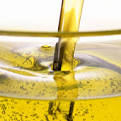










Birch White-Betula Alba
Family: Betulaceae
Synonyms: B. alba var. pubescens, B.Odorata, B. pendula, European white birch, silver birch.
General Description: Decorative tree, up to 15-20 metres high, with slender branches, silvery-white bark broken into scales and light green oval leaves. The male catkins are 2-5 cms long, the female up to 15 cms long.
Distribution: Native to the northern hemisphere, found throughout Eastern Europe, Russia. Germany, Sweden, Finland, the Baltic coast, northern China and japan.
Other Species: Many cultivars exist of this species of birch. The paper birch (B.papyrifera and B. verrucosa) are also used for the production of birch bud oil and/ or birch tar. NB should not be confused with the soil from the sweet birch (B. lenta) which is potentially toxic.
Herbal/ Folk Tradition: Birch buds were formerly used as a tonic in hair preparations. Birch tar is used in Europe for all types of chronic skin complaints: psoriasis, eczema, etc. In Scandinavia the young birch leaflets and twigs are bound into bundles and used in the sauna to tone the skin and promote circulation.
The sap is also tapped in the spring and drunk as a tonic. Buds, leaves and bark are used for 'rheumatic and arthritic conditions, especially where kidney functions appear to need support...oedematous states,: urinary infections and calculi.
Actions: Anti-inflammatory, antiseptic, cholagogue, diaphoretic, diuretic, febrifuge, tonic.
Extraction: Essential oil by steam distillation from the leaf-buds. Crude birch tar is extracted by slow destructive distillation from the bark; this is subsequently steam distilled to yield a rectified birch tar oil.
Characteristics: Pale yellow, viscous oil with a wood-green balsamic scent. It crystallizes at low temperature. The crude tar is an almost black, thick oily mass. The rectified oil is a brownish-yellow, clear oily liquid with a smoky, tar-like, 'Russian leather' odour. It blends well with other woody and balsamic oils.
Principal Constituents: Mainly betulenol and other sesquiterpenes. In tar oil: phenol, cresol, xylenol, guaiacol, creosol, pyrocatechol, pyrobetulin (which gives the 'leather scent).
Safety Data: Non-toxic, non-irritant, non-sensitizing.
Aromatherapy/Home Use: Skin care: Dermatitis, dull or congested skin, eczema, hair care, psoriasis etc.
Circulation muscles and joints: Accumulation of toxins, arthritis, cellulitis, muscular pain, obesity, oedema, poor circulation, rheumatism.
Other Uses: Birch bud oil is used primarily in hair tonics and shampoos, and some cosmetics for its potential skin-healing effects. The crude tar is used in pharmaceutical preparations, ointments, lotions, etc. for dermatological diseases. It is also used in soap and leather manufacturer - rectified birch tar oil provides the heart for many leather type perfumes and aftershaves.
Reference: The Encyclopedia Of Essential Oils: Julia Lawless.
Articles Latest
- CARDAMON
- CARAWAY
- CANANGA
- CAMPHOR
- CALAMUS
- Calamintha-Calamintha officinalis
- CAJEPUT- Melaleuca cajeputi
- Plant Expression
- Molecular Target: Cell Membrane
- CADE Essential Oil
- CABREUVA
- The Kashmiri rose oil worth millions
- Agarwood: The natural treasure worth more than gold whose heady scent is driving it towards extinction
- Nonselective Binding to Proteins: The Science of Advanced Aromatherapy
- Molecular Target: DNA, RNA, and Gene Expression
- BUCHU - Agothosma betulina
- BROOM - SPANISH - spartium junceum
- BORONiA - Boronia megastigma
- BORNEOL - Dryobalanops aromantica
- Boldo Leaf - Peumus boldus
- Birch White-Betula Alba
Articles-Most Read
- Home
- Balsam Canadian - Abies balsamea
- Copaiba Essential Oil
- Balsam Peru
- Basil French - Ocimum basilicum
- North America: Tea Tree and Monarda-3
- Basil Exotic
- North America: Tea Tree and Monarda-2
- Exploring Transcultural Constants
- Thyme Essential Oil
- Balsam Tolu
- Palma Rosa
- The Bioactivity of Essential Oils
- Benzoin - Styrax benzoin
- Why Pharmacology Cannot Demonstrate Essential Oil Efficacy
- Bay - West Indian - Pimenta racemosa
- Exploring Essential Oil Activity The Conventional Way
- Aromatherapy: An Answer
- Complex information From Plants
- Contacts
